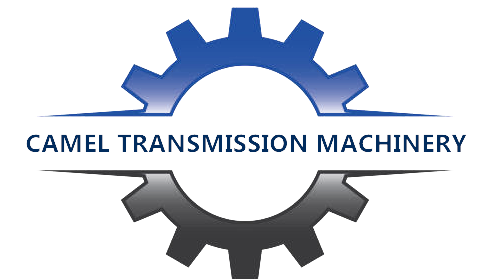What Are The Reasons For The Motor Failure?
Inspection and repair of the reason why the motor does not turn after the power is turned on
The motor does not rotate after being powered on, generally due to the following reasons:
1) The wiring of the control equipment is wrong;
2) The setting value adjusted by the overcurrent relay is too small;
3) The power is not connected, such as blown fuse, faulty switch or poor contact, open lead wire, etc.;
4) The connection between the power supply and the motor is faulty;
5) The motor winding is faulty, such as short circuit between phases, grounding, wrong wiring, open circuit, etc.;
6) Wound-type rotor asynchronous motor starting misoperation or starting resistance is too small;
7) The motor bearing is faulty and stuck;
8) The stator and rotor cores are rubbed (sweeping the bore), which is equal to an excessive load;
9) The motor load is too large or the mechanical rotating parts are stuck, etc.

Inspection and repair of motor overheating
It is found that the motor in normal operation is overheated, generally due to the following reasons:
1) The power supply voltage suddenly becomes high and does not match the rated voltage of the motor nameplate, or the three-phase power supply voltage is seriously unbalanced;
2) The load driven by the motor changes greatly, and the motor is temporarily overloaded;
3) The stator and rotor cores are swept due to bearing failure or clearance wear exceeding the limit, bending of the rotating shaft, local overheating and deformation of the iron core, and axial stringing of the rotor;
4) Environmental dust enters the motor and adheres to the insulating surface and blocks the cooling air duct, cooling air duct, etc., which makes the motor poorly ventilated, greatly reduces the cooling effect, and causes the motor to overheat;
5) The motor cooling device fails, and the air temperature adjustment device is faulty, causing the motor to overheat;
6) Three-phase motor single-phase operation;
7) The winding is faulty, such as short circuit, open circuit, grounding, wrong connection, etc.;
8) Uneven air gap.
The motor overheated after rewinding, the reasons are:
1) Wiring error;
2) Too many or too few turns of the coil;
3) The coil wire is too thin, and the coil pitch is too small or too large;
4) The assembly quality of the motor is not good, the iron cores are not aligned, the axial gap between the stator and rotor iron cores causes axial magnetic tension, and the air gap assembly and adjustment are uneven. As the insulation level of the motor continues to increase, and the allowable temperature rise limit is also increased, it may be normal that the temperature rise of the motor housing is relatively high. However, it is necessary to use an alcohol thermometer to test the housing temperature rise and bearing temperature rise of the department, and compare with the temperature rise allowed by the insulation class of the motor to confirm that the motor is overheated, then check according to the following steps.
1) First, check whether the voltage of the three-phase power supply is balanced and whether the degree of voltage fluctuation is greater than the guaranteed value of the manufacturer (±10[%]). Because the voltage is unbalanced, three-phase unbalanced current is generated, which causes the motor loss to increase and the motor heats up, so it must be corrected in time. The variation of the power supply frequency also affects the heating of the motor (±5[%]), but the actual change is not large, so it is generally not considered in the analysis.
2) Check whether the motor is running in single phase, whether the contacts of the three-phase contactor are in good contact, whether one phase of the fuse of the switch is blown, and whether the wiring (single-phase) is disconnected. Deal with the fault after it is detected.
3) Check whether the three-phase current exceeds the rated value. If it exceeds the rated value, check the reason. When dealing with this type of failure, it is necessary to find out the reasons for the sweeping: ①bending of the rotating shaft; ②bearing failure. The slight iron core sweeping will not affect the normal operation of the motor. When the sweeping is severe, the surface of the rotor can be lightly cut by a turning tool (generally, the turning diameter is about 0.2mm).
4) Dust covered with insulation affects the heat dissipation of the motor, clogged filters, clogged air ducts and vent pipes, etc., will cause the motor to overheat. Therefore, blowing and cleaning measures can be taken to eliminate dust, and the motor should be disassembled for cleaning if necessary.
5) If the winding is considered to be faulty, the winding short-circuit and grounding test can be performed. According to experience, if there is a short circuit between the windings of the motor, the motor will vibrate, and if the motor rotates for a long time, it will smoke after a short time. However, the chance of a short circuit between turns causing the motor to heat up and lasting for a long period of time is rare.
The temperature rise of the motor after rewinding and overhauling exceeds the limit, which may be caused by problems such as poor insulation treatment, incorrect coil data, incorrect wiring, and assembly quality. At this time, the motor should be disassembled and checked against the original record, and the correctness of the winding data should be ascertained.
CAMEL Transmission Machinery Factory is a professional supplier,distributor and manufacturer of speed reducers and related accesories. including gear reducers,rotary reducer,worm gearbox, servo-gearbox, planetary gearboxes,planetary gear reducer helical gear reducers,planetary gearbox,right angle gear reducer,gear reduction,gear motors, electrical motors,DC motors, DC gear motor,dc gearedmotors,AC gear motor,AC motors, servo motors,ac servo motor,dc servo motor,servomotor, bearings, gears,spur gear,helical gear,bevel gear,worm gear,planetary gear, couplings, oil seals, belts, chains, etc.If you have any need,please feel free to contact CAMEL:
sales@gear-reducer-worm.com
https://www.gear-reducer-worm.com
